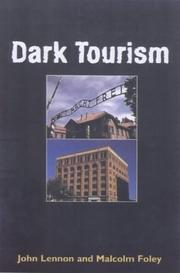Check nearby libraries
Buy this book

"A large number of sites associated with war, genocide, assassination and other tragic events have become significant tourist destinations. The authors of this volume call this phenomenon 'dark tourism', and they set out to explore it in detail, looking at possible reasons why tourists visit these attractions - for remembrance, for education, or even for entertainment." "Dark-tourism sites present governments and other authorities with moral and ethical dilemmas. Recent tragic history often confronts the dynamics of commercial development and exploitation. Complex issues are raised surrounding the extent and nature of interpretation, the appropriate political and managerial response and the nature of the experience perceived by visitors, local residents, victims and their relatives."--Jacket.
Check nearby libraries
Buy this book

Previews available in: English
Showing 2 featured editions. View all 2 editions?
| Edition | Availability |
|---|---|
| 1 |
zzzz
Libraries near you:
WorldCat
|
| 2 |
aaaa
Libraries near you:
WorldCat
|
Book Details
Edition Notes
Includes bibliographic references and index.
Classifications
The Physical Object
ID Numbers
Source records
amazon.com recordamazon.com record
Better World Books record
Library of Congress MARC record
Internet Archive item record
Promise Item
Better World Books record
marc_columbia MARC record
harvard_bibliographic_metadata record
Work Description
This book sets out to explore dark tourism; that is, the representation of inhuman acts, and how these are interpreted for visitors at a number of places throughout the world, for example the sites of concentration camps in both Western and Eastern Europe. Many people wish to experience the reality behind the media images, or are prompted to find out more by a personal association with places or events. The phenomenon raises ethical issues over the status and nature of objects, the extent of their interpretation, the appropriate political and managerial response and the nature of the experience as perceived by the visitor, their residents and local residents. Events, sites, types of visit and host reactions are considered in order to construct the parameters of the concept of dark tourism. Many acts of inhumanity are celebrated as heritage sites in Britain (for example, the Tower of London, Edinburgh Castle), and the Berlin Wall has become a significant attraction despite claiming many victims.
Community Reviews (0)
Feedback?History
- Created April 1, 2008
- 17 revisions
Wikipedia citation
×CloseCopy and paste this code into your Wikipedia page. Need help?
| August 31, 2024 | Edited by MARC Bot | import existing book |
| December 21, 2023 | Edited by Star Squirrel | Edited without comment. |
| November 13, 2023 | Edited by MARC Bot | import existing book |
| July 17, 2023 | Edited by ImportBot | import existing book |
| April 1, 2008 | Created by an anonymous user | Imported from Scriblio MARC record |










